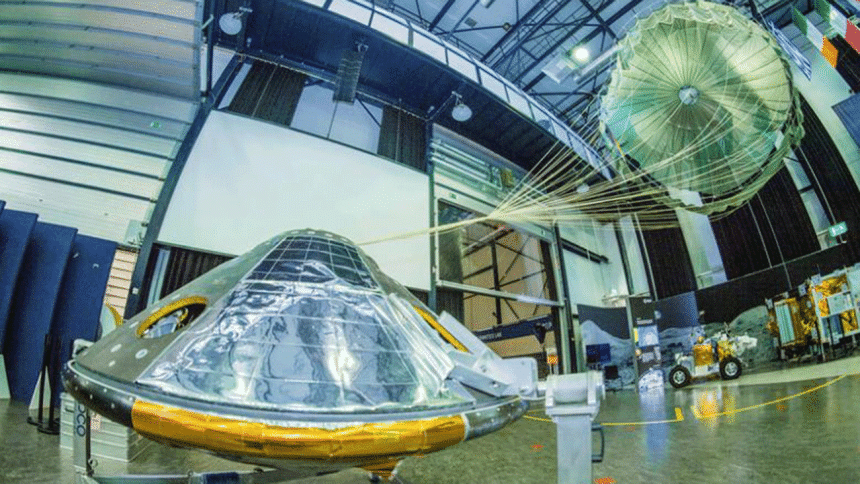Lander aims for risky touch down on Mars

The search for life on Mars may take a giant leap on Wednesday when a space lander is due to touch down on the red planet in Europe's first attempt to land a craft there since the Beagle 2's "heroic failure" more than a decade ago.
The disc-shaped 577-kg (1,272 lb) Schiaparelli lander, which will test technologies for a rover due to follow in 2020, is expected to enter Mars's atmosphere at a speed of nearly 21,000 km (13,049 miles) per hour at 1442 GMT.
It will use a parachute and thrusters to slow down before touching down on the planet's surface only six minutes later.
The lander is named for Giovanni Schiaparelli, the Italian astronomer who in 1877 began mapping the topography of Mars, extending study of what are now known as the planet's canals, a mistranslation of the Italian word canali, or channels.
Schiaparelli is part of the European-Russian ExoMars program, which will search for signs of past and present life on Mars and represents only the second European attempt to land a craft on the red planet, after Britain's Beagle 2 was ejected from the Mars Express spacecraft in 2003 but never made contact after failing to deploy its solar panels upon landing.
At the time it was dubbed "a heroic failure".
Landing on Mars, Earth's neighbour some 35 million miles (56 million km) away, is a notoriously difficult task that has bedeviled most Russian efforts and given NASA trouble as well.
A seemingly hostile environment on Mars has not detracted from its allure, with US President Barack Obama recently highlighting his pledge to send people to the planet by the 2030s.
Elon Musk's SpaceX is developing a massive rocket and capsule to transport large numbers of people and cargo to Mars with the ultimate goal of colonizing the planet, with Musk saying he would like to launch the first crew as early as 2024.
Life on Mars
The primary goal of ExoMars is to find out whether life has ever existed on Mars. The spacecraft on which the Schiaparelli lander traveled to Mars, Trace Gas Orbiter (TGO), carries an atmospheric probe to study trace gases such as methane around the planet.
Scientists believe that methane, a chemical that on Earth is strongly tied to life, could stem from micro-organisms that either became extinct millions of years ago and left gas frozen below the planet's surface, or that some methane-producing organisms still survive.
The second part of the ExoMars mission, delayed to 2020 from 2018, will deliver a European rover to the surface of Mars. It will be the first with the ability to both move across the planet's surface and drill into the ground to collect and analyze samples.
The ExoMars 2016 mission is led by the European Space Agency (ESA), with Russia's Roscosmos supplying the launcher and two of the four scientific instruments on the trace gas orbiter. The prime contractor is Thales Alenia Space, a joint venture between Thales (TCFP.PA) and Finmeccanica SIFI.MI.
The cost of the ExoMars mission to ESA, including the second part due in 2020, is expected to be about 1.3 billion euros ($1.4 billion). Russia's contribution comes on top of that.

 For all latest news, follow The Daily Star's Google News channel.
For all latest news, follow The Daily Star's Google News channel. 



Comments